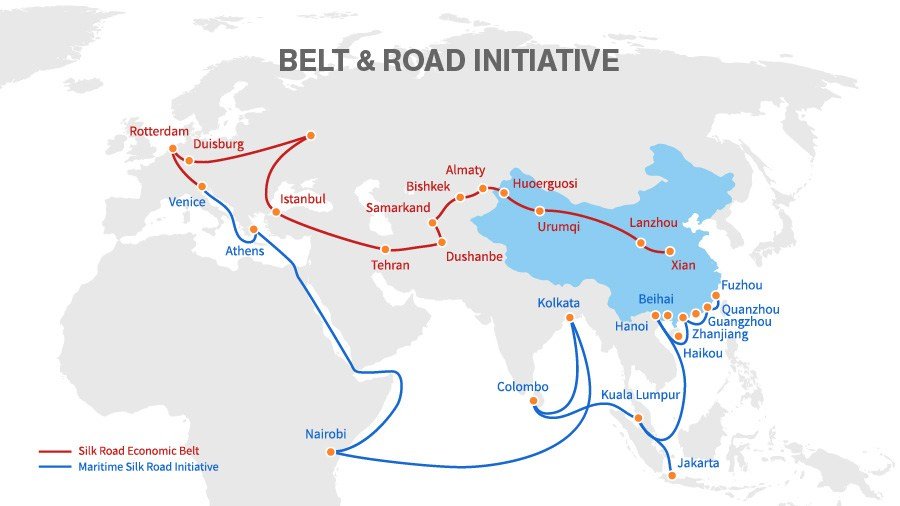Ambitious Belt and Road Initiative of China is in risk of failing amid the economic crisis


The Belt and Road Initiative (BRI), which China started in 2013 with the ambitious objective of harnessing the might of the Chinese economy to the cause of Asian economic development, is in danger of collapse as BRI has turned out to be more of a burden for Beijing than a boon.
According to reports, China chose Pakistan’s Gwadar as the launch site nine years ago and promoted it as Beijing’s commercial window onto the Indian Ocean and a hub for regional integration under the Belt and Road Initiative, but many projects have still failed to materialize or have yielded inconsistent to subpar results.
The Belt and Road Initiative (BRI), originally dubbed the “Silk Road” in a speech by Chinese President Xi Jinping in 2013, took shape with the introduction of the China-Pakistan Economic Corridor (CPEC), which runs from Gwadar to the Chinese city of Kashgar in the Xinjiang region.
With pledged funds of USD 46 billion, which have now increased to USD 50 billion, the CPEC demonstrated the “all-weather friendship” between China and Pakistan. The Belt and Road Initiative, now known as such, was supposed to be its foundation.
The Pakistani government referred to Gwadar as “the economic future of Pakistan” when the CPEC agreements were signed. It even asserted that Gwadar’s gross domestic product would rise from an estimated USD 430 million in 2017 to an estimated USD 30 billion by 2050, creating 1.2 million jobs for a population of 90,000.
However, the CPEC and the BRI are currently in trouble, with only a few months till the 20th Chinese Communist Party Congress in Beijing.
Reports suggest that nearly eight years after China announced development projects in the city, including a new airport, the Gwadar Free Zone, a 300-megawatt coal power plant, and a water desalination plant, none of these have been finished. Meanwhile, China invested a total of USD 53 billion in Pakistan between 2013 and 2022.
In Gwadar, a 300 MW power plant was supposed to be constructed, but the construction has not yet begun. The lack of power there is possibly the largest roadblock to any significant progress.
According to Michael Kugelman, deputy director of the Asia program at the Wilson Center in Washington, “There was an assumption that new infusions of Chinese capital and technology would magically develop Gwadar into a world-class port, even though previous efforts to achieve similar goals had fallen far short.”
According to Gong Chen, the founder of the Beijing-based think tank Inbound, who provided early advice to the central government regarding the BRI, Beijing’s primary motives when it established the BRI in 2013 were domestic. He stated that the concept’s main motivators when it was initially put before policymakers were China’s rapidly aging population, the difficulty of filling jobs in the Pearl River Delta, China’s goal to increase the size of its market, and an overhang of excess capacity in many economic sectors.
According to the report of Nikkei Asia, loans to Sri Lanka, another BRI focus, led to an infrastructure boom but also to a debt burden that may have contributed to the country’s first financial default in May and the ouster of former President Gotabaya Rajapaksa.
DISCLAIMER: The author is solely responsible for the views expressed in this article. The author carries the responsibility for citing and/or licensing of images utilized within the text.
